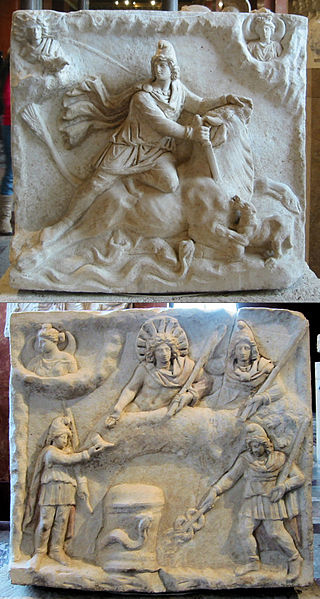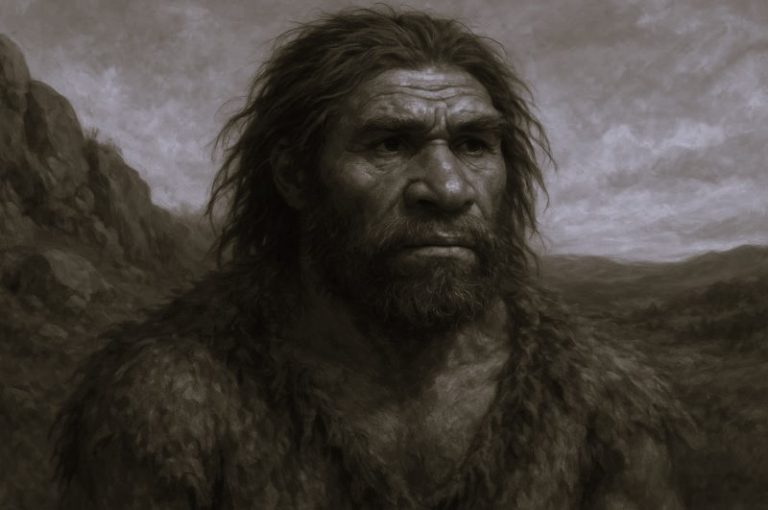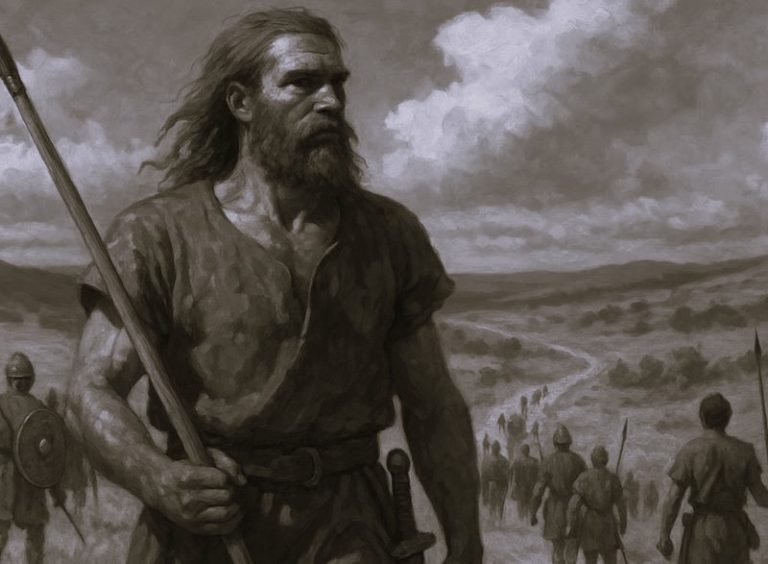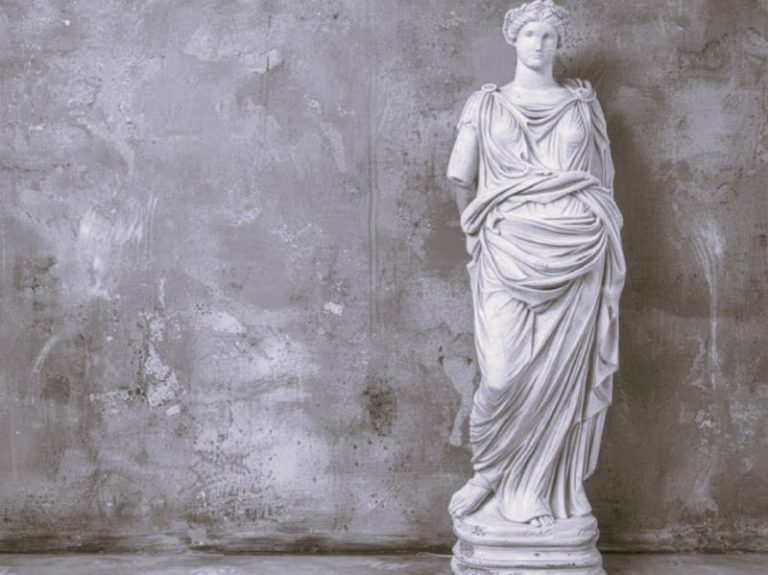

By Dr. Bryan S. Rennie
Professor of Religious Studies
Westminster College
Introduction
One single word that can accurately be used to describe the religious situation of the Mediterranean world is “complex.” all kind of religion was manifested in some form or other around the Greek and Roman Empires in the Centuries before and after the development of Christianity. Considering the complexity of religion that exists in the Indian sub-continent and also in China, it could easily be argued that this degree of complexity is the norm and the idea of a single, unified and dominant religion shared by all members of a single culture is the aberration from that norm.
However that may be, from around 10,000 years BCE the development of cultural artifacts robust enough to stand the passage of time such as stone buildings and inscriptions, have combined to permit us a fairly detailed view of this period of history. From around 1,500 years BCE we see the gradual rise of the technology of phonetic script and written literature and, in many ways, this is when history, as the understanding of past events through the interpretation of written records, really begins.
The Minoan Civilization

One of the earliest civilizations of the Mediterranean world to leave substantial records was the Minoan civilization of the second millenium BCE. Centered on the island of Crete this civilization is best known for its palace complexes, possibly the source of the legend of the Labyrinth or maze of king Minos, for whom the culture is named.
The Minoans left records in a pre-phonetic hieroglyphic script and in the still only imperfectly understood “Linear A” script which is phonetic and most probably Semitic in origin.

The most common elements of their religion are a goddess of nature, mistress of animals, mountains, sea, agriculture, and even of war, queen of both the living and the dead.
Sacrifices and offerings were made to her in caves and on mountain peaks and in special rooms in the palace complex. The Minoan culture practiced “bull-dancing,” which may have also contributed to the myth of Theseus and the Minotaur, the bull of Minos.
The Mycenean Civilization

After the fifteenth century BCE the Minoans were supplanted by the Myceneans, the first genuinely Hellenic (Greek-speaking) culture. Their artistic style and luxury goods were obviously strongly influenced by the Minoans. However, their language and culture, although influenced by the Minoans, was fundamentally different. It is something of an over-simplification to attribute the triumph of male characteristics in both religion and society to the Myceneans, but it is certainly true that the advent of this culture saw the last dominance of depictions of the divine as primarily female in this part of the world.
Patriarchy and battle are the dominant themes of the Myceneans, and female deities are displaced by male sky gods of apparently Indo-European origins such as Zeus (called Dyaus Pitr, the “Sky Father” in the early Hindu sacred texts, the Vedas). It was the Mycenean civilization that gave us the Homeric epics, the Illiad and the Odyssey–transmitted orally for a long period then written down between the eighth and sixth centuries before the Christian era. As well as these dominant sky gods, the Myceneans had a whole pantheon of local deities to whom they sacrificed grain, wine, oil, honey, and livestock.
Archaic and Classical Greek Religion
Overview

After the collapse of the Mycenean culture there was a hiatus of about 300 years between 1100 BCE and 800 BCE, sometimes known as the Greek Dark Ages. No written records were produced in this period until the adoption of the Phonecian alphabet gave rise to writtten records after the 8th century BCE. From these we know that, as well as a very practical interaction of religion and politics the Classical Hellenic period also continued to see the practice of Shamanic charismatic religion. That is, figures claiming supernatural powers of prediction, ecstatic out-of-this-world trips, communication with various supernatural beings, recollection of other lives, and so on. They were known as iatromantes by the Greeks from iatros, a healer, and mantes, a seer.
No doubt the best known is Pythgaoras of Samos who gave the world the theorem that bears his name. He believed that all things in the world were harmonious with number–a radical and revolutionary idea at the time–among other, less familiar notions. These iatromantes seem to have gradually given way to more reasoned theoreticians whose attempts to explain their experiences took on increasingly philosophical forms. Many of these philosophers who came after Pythagoras shared his intention to systematically separate the rational functions from the influence of bodily desire (although they may have disagreed with Pythagoras on practically everything else).
The most effective and influential of these philosopher-mystics was undoubtedly Plato, who held that the successful resistance of the soul to bodily desires would lead to an existence in higher realms than this earthly environment. In these higher realms the soul would be blessed with direct acquaintance with the eternal ideal forms, the most real of all entities, of which all worldly, temporal, and transient particular objects are but imperfect images, like distorted shadows or reflections. This tradition of Platonic mysticism was profoundly influential on the development of Christianity. For example, the concept of the Logos, the word made manifest, is found in Platonic philosophy before its appearance in the gospel of John.

Later Greek religion mainly concerns the interplay of myth and ritual. Performed rituals tended to act out or otherwise to represent mythic narratives, but both ritual and myth were local and infinitely variable, as were the deities. For example, Apollo was known as Pythian Apollo at the oracle in Delphi, but as Delian Apollo in the island of Delos where his worship seems to have originated, and is Phoebus in the Iliad.
From the eleventh to the eight centuries before the Christian era Greek popular religion became increasingly connected with the local city-states that were the dominant political units of the period. The sacred calendar, the official positions and places of government, were increasingly identified with the sacrificial cults and thus reaffirmed community cohesion and class structures. (This is generally known as civic religion and functions today in the connection between religion and politics.) Some of these civic religions connected with citizenship of Athens, became increasingly exclusive narrow societies. A good example is the Eleusinian mystery religion, although this is just one example of mystery religion in general).
Mystery Religion

For a clearer understanding of mystery religion see Walter Burkert, Ancient Mystery Cults, Harvard University Press, 1987. Mystery religion is known to have flourished from the sixth century B.C.E. onward. Although often focused on “oriental” gods and goddesses such as the Egyptian Isis and Persian Mithras, the cults themselves seem to have been of Mediterranean origin.
“Mysteries are initiation ceremonies, cults in which admission and participation depend upon some personal ritual to be performed by the initiand. Initiations . . . are found in a wide range of settings, from the most primitive Australian tribes to American universities. Mystery initiations were an optional activity within polytheistic religion, comparable to, say, a pilgrimage to Santiago di Compostela within the Christian system. . . . Mysteries were initiation rituals of a voluntary, personal, and secret character that aimed at a change of mind through experience of the sacred”
Burkert, 8, 10, 11
However, the initiation rituals of the mystery traditions often sought an existnetial transformation through a highly dramatic and emotional ritual such as the taurobolium.
Alexander the Great inherited a unified Greece from his father, Philip of Macedonia. Between 336 and 323 B.C.E. (the year of his death) Alexander united the entire oikumene (the known world) under the dominantly Greek culture. As Martin says, “With the advent of Hellenistic Internationalism, Eastern deities such as the Egyptian Isis and Syrian Atargatis, found themselves welcomed as cultural citizens of Hellenistic society and worshipped alongside traditional Greek deities by a newly constituted cosmopolitan following. . . . As these deities gradually became participants in the Hellenistic world, they were simultaneously severed from their original roles and meanings” (Martin, 10).
“Alexander’s empire had transformed the world from parochialism to internationalism, from a collection of autonomous and self-sufficient city states to an interdependent but competitive and bounded empire”.
Martin, 29
Although, of course, the same thing could be said for the Persian Empire to the east of the Mediterranean.
Hellenistic Piety

“Piety . . . designates the traditional system of conventional practices concerning the home and family and, by extension, those practices which surround and are part of being at home in one’s world under the rule of a family of gods. Although similar practices of piety are recognizable in many different cultures and in various historical periods, they are always articulated in terms of a particular locale or place and are transmitted through local traditions. They represent the expression by a particular people of their local order of things. . . . This assumption of an order of things manifest in everyday life is more than anything else characteristic of piety. Representing a locally situated strategy of existence, the techniques and practices of piety precede or underlie historically founded or transplanted religious traditions”.
Martin, 12
The assumption of a cosmic order of things referred to above has certain implications. As is stated by Quintus, a polemical opponent of Cicero, (mid 1st B.C.E.),
“all things happen by Fate [Heimarmené], if there were a man whose soul could discern all the links that join each cause to every other cause, then surely he would never be mistaken in any prediction he might make . . . the evolution of time is like the unwinding of a cable: it creates nothing new and only unfolds each event in order”.
quoted by Cicero in De Divinatione I, 56, 127
Martin explains:
“Divination was not so much the prediction of a temporal future as it was a conquest of ignorance concerning the cosmic or spatial order of things. This spatial law of inevitable causality negated any view of the future as temporal possibility”.
Martin, 42
The Eleusinian Mysteries

“The deities of the Hellenic Mysteries were not new-they had been known from the earliest times-but were themselves transformed by and into their Hellenistic roles. Although the historical origin of each was still remembered as Greek, Egyptian, or Syrian, locale became less important; for with Hellenistic internationalism each had become a universal deity. Thus, all the world was invited to Eleusis to become initiated into the mysteries of Demeter, and the Egyptian Isis revealed to Lucius that her name and divinity were ‘adored throughout all the world.’
“As a result, a sacred order of things was no longer assumed to be immanent in a particular terrestrial realm or locale, but was elevated to the universal locus of the celestial realm. The presence of a divine natural order as assumed by traditional piety was supplanted by cult epiphanies of deities able to bridge the Ptolemaic image of the cosmic abyss and overcome the separation of humans from the gods. The new epiphany of the deity deposed the regional cosmic rule of Zeus, Poseidon, and Hades at once”.
Martin, 59
“The famous public ritual of Demeter conducted annually in Athens could be witnessed even by casual spectators. As the Homeric Hymn to Demeter seems to distinguish between the well-known myth and the ‘awful mysteries’ that Demeter taught to the Eleusinians, so the public rites were only preparatory to mystery initiation.
The public performance of the Eleusinian Mysteries began with the so-called Lesser Mysteries. Celebrated each spring in Athens these lesser mysteries were dedicated to Persephone upon the occasion of her return to the underworld and had a vestigial relation to the thalysia, the ancient agrarian harvest festival of the gathering of grain prior to the drought of summer and its storage in subterranean silos. . . .
The celebration of the Greater Mysteries, dedicated to Demeter, was in the latter part of September, the time of the thesmophoria or festival of fall planting. It was consummated in the Telesterion, the Place of Perfection, within the sacred precincts of the Demeter sanctuary in Eleusis. . . . The festival lasted ten days, recalling the duration of Demeter’s wandering in search of her abducted daughter before learning the truth from Hecate on the tenth day.”
Martin, 65-66
Dionysus and Orpheus

Among the popular pantheon of the Greek gods, mostly fathered by Zeus, some stand out as unusual. The figure of Dionysus seems to have originated in the Thracian-Phrygian region on either side of the Bosphoros. Dionysus was the son of Zeus and a Theban princess, Semele. He is often interpreted to be the manifestation of divine chaos or disorder. His maenads or female devotees were supposed to dance wildly in their frenzied devotions, tearing animals (and occasionally human interlopers) apart with their bare hands and feasting on their raw flesh. These orgiastic festivals were named Bacchanals after the God’s Roman form. The polar opposite of Dionysian revels was the Orphic way of life, named for Orpheus, who seems to have been a reformer of the Dionysian tradition in Thrace. Not content with controlling the excesses of the revels, Orphism went to the opposite extremes, counseling abstinence from food and sex and gaining a considerable following in the sixth and fifth centuries BCE. Many Orphics became wandering ascetics and were thus in their own way just as opposed to the social conformities of the civil religions as were the Dionysians.
However, this extreme polar reading may be an exaggeration and oversimplification. The Dionysus myth is well documented by, among others, Euripides in The Bacchae, written about 407 B.C.E. and in the Homeric Hymn to Bacchus from an even earlier date.
“Dionysus was held to be the son of Zeus and the mortal woman, Semele, daughter of Cadmus, King of Thebes (Hym. Hom. Bacch. I, Vii, and XXVU). Encouraged by the jealousy of Hera, Semele contrived, like Psyche, to view the full divinity of her lover and met with similar disastrous consequences. Unable to bear the full epihany of Zeus’s Olympian splendor, Semele was struck dead by his fiery radience. Nevertheless, Zeus stitched their unborn child to his thigh and carried the fetus to its full term (Diodorus Siculus, III, 62, 1-IV, 5, 4). As sung by the chorus of The Bacchae:
So his mother bore him once
In labor bitter; lightning-struck
Forced by fire that flared from Zeus,
Consumed, she died untimely torn,
In childbed dead by blow of light!
Of light the son was born! (Martin, 91-92)
Later Dionysus discovered wine and spread this gift with his cult, throughout the known world. Among his other exploits is the rescue of his mother from the underworld after which feat he was accepted into the company of the Olympian gods.
“This Dionysian wine ritual was incorporated into Christian imagery by the Gospel of John. According to the gospel, the first public act of Jesus was to transform jars of water into wine-the typical Dionysian epiphany miracle. By employing this well-known Dionysian convention, the Gospel at its outset establishes the presence of Jesus as a divine epiphany. [See Rudolph Bultmann, The Gospel of John, 118-119.] To dismiss the Dionysian use of wine simply as the occasion for mere drunken revelry and debauchery-which did occur- would be as misleading as to understand the Christian use of wine similarly- which also occurred, for example, according to Paul in the sacramental excesses practiced by the Corinthian Church (I Cor, 11:17-22)”.
Martin, 95
However, it does appear that Orpheus was originally a reformer of the Dionysian cult and the Orphics certainly did emphasize ascetic practices aimed at releasing the divine Dionysian soul from the prison (sema) of the body (soma). According to the second century C.E. traveler and writer, Pausanius, the “Orphic Mysteries,” if we can properly speak of them as Mysteries in the technical sense of the word, were part of a genre of “literary mysteries” which “preserved the outward form of a Hellenistic mystery religion in the written word. If the reader of such a literary mystery had turned away from the world, as evinced by an ascetic lifestyle, this literary presentation could affect him just as if he had ritually participated in an actual mystery ritual” (Martin, 102). In other words, to such people initiation into the literary mysteries of the narrative was equally effective as initiation into the physical mysteries of earlier initiation rites.
Roman Religion
Overview

The city of Rome, according to its own traditions, was founded during the eighth century before the Christian era. At this time, and until the unification of the Roman Empire, the Italian peninsula was divided into Greeks in the southern colonies, Latins in the central section, and Etruscans north of the Tiber River. Etruscan influence had its effect in later Roman religion. Although the first four kings of the original Roman period of territorial expansion were themselves Roman, they were followed on the throne by three Etruscans. Although the last king, Tarquinus Superbus was probably thrown out by the Romans in 510 B.C.E. the Etruscan influence was well-established. After this time Rome was a republic.
However, the power and influence of the military leaders was so great that they became the de facto rulers of the republic and, finally one of them, Julius Caesar, proclaimed himself dictator perpetuus and imperator in 45 B.C.E. Although Caesar was assassinated for his troubles, his nephew Octavian, later known as Augustus (“the glorious”), became emperor in 27 BCE. After his death, having established the Pax Augustus or Pax Romana (the glorious peace or peace of Rome) which was to last for about 500 years, Augustus was declared a god. This instituted the imperial cult which later became the mark of the end of traditional Roman religion and the beginning of its most decadent period before the final fall of Rome.
By the second century of the Christian era the Empire covered the whole Mediterranean world from northern England to Persia. (Note that the Christian system of dating was not adopted until the sixth century when the Roman Empire fell to the northern “barbarians” and Christianity became the major legacy of the fallen Roman culture.) In the fourth century the Empire was divided into the western zone centered in Rome itself and the eastern empire with its capital at Constantinople (= Byzantium, now Istanbul) named originally for the Roman Emperor, Constantine, who moved his capital there after approving Christianity as an acceptable religion within the Empire.
Like Greek religion, Roman religion had a pantheon and a complex mythology. During the first century before the Christian era Roman writers, for example Titus Livius (59 BCE to 17 CE), would give systematically historical interpretations to their myths. Livius claimed that the war between the Romans and the Sabines was a historical episode from the Roman past although the same story exists in other Indo-European cultures in an entirely mythic form. Since the Old Testament texts had been translated into Greek from about the middle of the third century before the Christian era and would have been available to any educated Roman it is not impossible that the emphasis on history found in the Hebrew Bible had influenced this turn of events in Rome. Euhemerism, the belief that mythic figures are authentic historical figures expanded and aggrandized by the perspective of time, was anyhow common.
The Classicist, Georges Dumézil, has pointed out the significance of the “tripartite ideology,” not only for Romans and Etruscans, but for all Indo-European peoples. The society seemed to be originally divided into three groups of citizens, intellectuals who were rulers, warriors or guardians, and the skilled workers (of course, there were also non-citizens, often slaves, present too). This tripartite division obviously influenced the philosophy of Plato who likewise divided the human spirit into reason, spirit, and appetite. The first governs by the application of the second and the restraint of the third.
Whether this is the reason for the similarly tripartite arrangement of gods in Rome is a matter of speculation, but it is certainly the case that Jupiter, Mars, and Quirinius (Rule, War, and Sustenance, respectively) were the central focus of ancient Roman religion, known as the Capitoline Triad. Although this triad was replaced by Jupiter, Juno, and Minerva (corresponding to Zeus, Hera, and Athene) under the Etruscan kings the triadic arrangement continued. Later the triad was changed to Ceres (Demeter), Liber (Dionysius), and Libera (Kore). As well as the interest in historical events of the Jewish religion, Rome also exhibited the respect for tradition and social organization of the Confucian tradition, although this was certainly not a product of Chinese influence.
Roman Mystery Religion

As we have seen, the word “mystery” in this context has a precise technical meaning and refers to the initiatory secrets of this form of Greco-Roman religion. These institutions seem originally to have been a combination of initiation into secret societies and agrarian (farming) religions. There do not seem to have been any counterparts to the Greco-Roman mystery religions in the Babylonian, Egyptian, or Persian cultures so the phenomenon seems to have begun in the Hellenic world. The Orphics and the Pythagoreans did not have initiation mysteries, nor did the Dionysians, although Dionysius was closely connected to the Eleusinian mysteries associated with the city of Athens. The main figures in this, as mentioned already, were Demeter and her daughter Kore/Persephone. The Eleusinian mysteries belonged to the Athenian state and granted initiation into the stae and possibly into a privileged afterlife.
More is known of the mystery religion of the Roman period associated with such deities as Dionysius, Isis (originating in Egypt), Mithra (originating in Persia and related to Mitra/Varuna of the early Vedic texts), Zeus, Helios, Sol Invictus, and Jupiter. These cults were at their peak in about the fourth century of the Christian era.
Mithraism

The willingness to adopt gods and goddesses of foreign cultures is characteristic of the mystery cults. Egypt was already ancient at least 5,000 years old in Roman times and the figure of Mithra has very ancient Indo-European roots as shown by his appearance as Mitra in both the Hindu Rg Veda and the Zoroastrian Avesta. The antiquity and exoticism of these figures lent an authenticity and authority to the religions. Mithraism was very widespread among the soldiers of Rome and so was diffused throughout the length and breadth of the Empire.
“There is another form of personal religion–elementary, widespread, and quite down-to-earth–that constitutes the background for the practice of mysteries: it is the practice of making vows, ‘votive religion,’ as it has been called. ‘Those who are ill, or in danger, or in need of any kind, and conversely when people attain any kind of affluence’ [Plato, Laws, 909e]–such individuals make promises to the gods and usually fulfill them by offering more or less precious donations. This phenomenon is so common that it is seldom discussed. . . . The practice of vows can be seen as a major human strategy for coping with the future. It makes time manageable by contract. From crippling depression, man can rise to impress the structure of ‘if-then’ upon the uncertainties of the future. If salvation from present anxiety and distress occurs, if the success or profit hoped for is attained, then a special and circumscribed renunciation will be made, a finite loss in the interests of a larger gain. There is a natural tendency to perpetuation; when setting up the votive gift the worshipper prays for further help. . . . The relevance of all this for mystery cults is threefold. First, the practice of personal initiation, in motivation and function, was largely parallel to votive practice and should be seen against this background as a new form in a similar quest for salvation. Second, the appearance of new forms of mystery cults with new gods is just what one would expect as a result of these practical functions. Third, the spreading of the so-called Oriental mystery religion occurred primarily in the form of votive religion. . . . Mithraism thus appears as a complete fusion of votive religion and mystery cult”.
Walter Burkert, Ancient Mystery Cults, 12, 13, 15, 17
That is to say, it was obvious and convenient to vow to become initiated, or to take the next step in the initiatory process: “if I survive this tour of duty, if my wife gives birth safely, (etc.) I vow to become an initiated follower of Mithras, or Isis, or whomever. But that’s the question: of whom should I become a follower? “New” and potent-sounding deities from the far reaches of the empire and beyond would attract these followers. It was indeed in the form of religions that required their followers to make vows to exotic deities and to undergo initiations that these mystery religions did spread. Mithraism can be equally described as votive or as mystery religion.

“Clearly there was a Mithras myth; a sequence of stories is documented by the series of scenes that usually surround the central panel of the Mithras reliefs in the caves. . . . But no text has been preserved to tell the story” (Burkert, 73). Luther Martin agrees. “Unlike the myths of the other mystery deities, no received myth of Mithras survives,” the myths associated with the cult are lost and “knowledge of Western Mithraism must therefore be reconstructed almost entirely from archeological and iconographic evidence”.
Martin, 114-15
The most common image associated with the Mithraeum, the artificial caves in which Mithraic initiation was practiced, is the Tauroctony or bull-slaying scene (see Burkert, Ancient Mystery Cults, fig. 11., p. 64. The Mysteries of Mithra by Franz Cumont is a good source of images, although the scholarship has arguably now been surpassed). This image might seem to suggest that the Taurobolium ceremony of bull-sacrifice might be an important initiation rite for the Mithras cult. However, that ceremony is evidently more clearly linked to the worship of the great mother goddess (see Burkert, Ancient Mystery Cults, 6, 36, 98). Elements common to all or most such images: the dog at the bull’s throat, the scorpion on its genitals, the serpent below the bull, the frequent inclusion of the sun and the moon or two torch-bearers, clearly suggest an astrological structure to the image. Crater (the cup) and Corvus (the raven) are also Roman constellations no longer familiar to us, but frequently included in Mithraic icons. As Burkert says, “[a] special offshoot of Hellenistic science is astrology. This too made its impact on the cult of Mithras-whereas there is hardly a trace of it in other mysteries” (Burkert, 84).
“Mithras was identified with the sun at an early date, and Mithras Helios or Mithras Sol is invoked in countless Mithraic inscriptions. In the iconography of Mithraic monuments, however, Mithras and Helios are kept distinct” (Burkert, 83). “Clearly the Roman Mithras must be considered only a distant relative of the Persian deity, perhaps related by name alone. His Western cult . . . must have originated somewhere in the Roman East–Plutarch [c. 50 – 120 C.E. ] says among the Cilician pirates (Life of Pompey 24)-or even in the Roman West, given the density of Mithraic remains in that part of the world. The cult swept the Roman world during the first three centuries C.E. until its disappearance following the decree of Theodosius” (Martin, 114). [In 380 C.E. the Emperor Theodosius issued a decree founding the orthodox Christian state and in 391 another that prohibited paganism.]
“Mithras stands apart . . . The initiations are more prominent and more sophisticated in these mysteries that anywhere else, since they are multiplied to produce seven grades of initiates: Korax/corvus, the raven; nymphus, the chrysalis; stratiotes/miles, the soldier; leo, the lion, Persa, the Persian; heliodromus, the sun-runner; and pater, the father. Each step would have its own ritual . . . but there is extremely little evidence in either literature or iconography, and the little we do have . . . is not clearly correlated to the seven grades”
Burkert, 99
It might seem that this lack of evidence would prevent us from drawing any useful conclusions from our limited knowledge. However, as we can see from our consideration of the rise of Christianity, comparison to Mithraism can provide some useful clues about the success of Christianity. For example,
“[i]n Mithraic iconography, Mithras and Helios feast together at a table covered with the slaughtered bull’s hide. . . . In all these cases the sacrificial means are realistic, enjoyable festivities with plenty of food, in contrast to the rather parsimonious everyday life. There is no reduction to a purely symbolic level, as is characteristic of Christian communion. The simplicity of the latter alone made mass religion possible, while mysteries remained costly clubs with restricted membership; they were too expensive to be available to all”.
Burkert, 110
Furthermore,
“[t]he general lack of organization, solidarity, and coherence in ancient mysteries, which may appear as a deficiency from a Jewish or Christian point of view, is outweighed by some positive aspects with which we may easily sympathize. The absence of religious demarcation and conscious group identity means the absence of any rigid frontiers against competing cults as well as the absence of any concept of heresy, not to mention excommunication. The pagan gods, even the gods of the mysteries, are not jealous of one another; they form, as it were, an open society”.
Burkert, 48
Whereas monotheism, despite its rhetorical advantages, tends to be inherently antagonistic to any and all other Gods. So we can understand both why Mithraism flourished as and when it did, and why and how it was superceded by the development of Christianity.
“It has generally been assumed . . . that Mithras should guarantee his followers some kind of transcendent salvation-immortality, ascent into heaven from the ‘cave’ which is the cosmos. Clear evidence, however, is lacking. This is all the more surprising because spiritual life, the immortality of the soul, and the ascent of the righteous to heaven are such well-established ideas in Iranian, Zoroastrian tradition. But this is not so with Mithras”.
Burkert, 270

Even though Mithras was supposed to have come from Iran, as has been mentioned. This would bear out the claim that the principle function of Mithraism was votive rather than “spiritual.” However, there is some evidence that the astrological significance of Mithraism portrayed the milky way as the path to the most beneficial afterlife and those who knew the signs in the heavens as best equipped to navigate this path.
Along with the votive character of the Mithras cult comes the emphasis on initiation: “All seems to center on the initiations performed by secret clubs. The best parallel, which is often invoked, may be the Masons” (Burkert, 41).
“Soldiers and merchants were the main reservoir for the recruitment of Mithras mystai” (Burkert, 42). Note that although there is a word, mystai, for the general initiate of any mystery cult, there is no word in Greek or Latin for a member of the Mithraic mysteries, indicating that they did not form genuine, recognizable communities. “It is remarkable that slaves are admitted–with a strict selection process, no doubt–while women remained excluded” (Burkert, 43). Soldiers, merchants, and slaves, of course, had fairly dangerous lives and extreme reasons to make frequent votive offerings.
Again, Martin agrees, and further points to the universal nature of Mithraism. “Mithraism was an initiatory cult concerned with overcoming the vicissitudes of an apparently chaotic world. Yet Mithraism exhibited none of the chthonic [literally “of the earth” but indicating local, geographical] character of the other mysteries” (Martin, 113-14).
Burkert suggests that “Mithraism may in fact have been anti-Gnostic, heroically facing and maintaining this cosmos built on violence and sacrifice” (Burkert, 27) rather than seeking to escape it.
For a detailed contemporary analysis of Mithraism see this web document.
Gnosticism

The antisomatism or aversion to the physical body that was expressed by the iatromantes in the sixth century BCE and by Orphism in the fifth influenced many later views on human nature. (It still exists today in a more moderate form in Puritanical Protestantism and in occasionally extreme forms such as the Heaven’s Gate cult.) This tendency to look on the human form as fleshly and inherently corrupt, the source of all manner of lusts and temptations, and worthy only of resistance and control, found its greatest expression in Gnosticism.
Contemporary with and a great rival to early Christianity, Gnosticism was itself a widely varied phenomenon. All its forms are identifiable by the presence of a cosmogonic myth in which the goddess Sophia, the manifestation of wisdom, is responsible for a catastrophe that leads to the creation of the visible world. Often the miscarried son of Sophia, known as the demiurge, actually creates of the world. This demiurge is not a particularly good god, not actually evil, but flawed, ignorant, proud, and often called “mad.” He is specifically identified as the deity of the Jewish Bible, the Old Testament God. Bear in mind that the these texts, certainly the first five books, were translated into Greek, which was by that time the common language of the whole Mediterranean world, about the middle of the third century BCE.
The Old Testament God is wrathful and sometimes bloodthirsty and seems to support this interpretation quite well. Consider the way that God “hardens Pharaoh’s heart” to prevent his release of the Israelites, then punishes the Egyptians because Pharaoh did precisely what God wanted him to (Exodus 9:12; 10:1, 20, 27; 11:10; 14:8). Or the passage in Exodus 32:27 and 28 when Moses returns from Sinai carrying the Ten Commandments and finds the Israelites worshipping a golden calf:
Thus says the Lord, the God of Israel, ‘Put your sword on your side, each of you! Go back and forth from gate to gate throughout the camp, and each of you kill your brother, your friend, and your neighbor.’ The sons of Levi did as Moses commanded, and about three thousand of the people fell on that day.
Or I Samuel 15:2 and 3,
Thus says the Lord of hosts, ‘I will punish the Amalekites for what they did in opposing the Israelites when they came up out of Egypt. Now go and attack Amalek, and utterly destroy all that they have; do not spare them, but kill both man and woman, child and infant, ox and sheep, camel and donkey.’
To the Gnostics with their abhorrence of violence and suspicion of all passion and selfishness, these acts appeared to be the very epitome of a crazed and self-indulgent deity.

Gnosticism thus contradicted two of the central principles of Judaism, Christianity, and even Platonism, that is, the principle that the world was created by a benevolent intelligence, and the principle that the world was created for the benefit of humanity. For the Gnostics humanity is superior to both the demiurge and the imperfect world he has created because we contain a spark of the Good Spirit who created the higher world from which both Sophia and the Demiurge originally came, a world beyond our bodily senses but eventually accessible to the spiritual adept. In this respect Gnosticism can be compared to those elements of Hinduism that emphasize the superiority of human sages above even the gods themselves (as also does Buddhism), and the identity between the indwelling human essence or atman and the ultimate power of the cosmos, Brahman.
The gnostics usually looked to a redeemer who would save them from their entrapment in this low prison of life by revealing the existence of the Spark of Spirit enclosed within their souls. The knowledge (in Greek = gnosis) of this is what would allow them to escape the world and ascend to a higher plane, hence the name of gnosticism. This redeemer was most frequently identified as Jesus Christ. The Gnostics, however, usually followed the docetic Christology which claims that Jesus did not really have a physical body but was a spirit form descended from the higher realms. He thus could not have actually suffered and died on the cross according to their understanding. Often some substitute, Simon of Cyrene or even Judas, is said to have died in his place.
Marcionites and Manichees

Many such alternative interpretations of the significance of the events of Easter forced the developing Church to formalize its collection of scriptures and its doctrines. Two others were Marcionism and Manichaeism. Marcion of Sinope (c. 80 – 155 CE) was not himself a Gnostic since he denied the divine spark in humanity, but he did embrace the concept of a demiurge and a docetic Christology. For Marcion humans were doomed to languish in this inferior world and deserved no better. Only the free and undeserved gift of salvation given through Christ can save us from our fate. Marcion attempted to formalize a closed canon of Christian scriptures which included only the gospel of Luke and the letters of Paul. This belief had considerable success and evolved into a well-constituted church in the third and fourth centuries of the Christian era. The calling of the Marcionites to martyrdom was apparently too strong and their church had died out in the Roman world by the fifth century, although they continued for a while longer in Syria and Cyprus.
Manichaeism, was named for its founder, Mani, who lived in Persia towards the close of the third century of the Christian era. It was strongly influenced by the Gnostics, held radically dualistic views considering the world to be constructed out of light and darkness, and was strictly ascetic. Although the world was created by an imperfect demiurge, the dark matter of its construction contained particles of light, and so everything in creation reveals the nature of the higher, purer realms, if one can but see the truth. Manichaeism spread from Persia west to the city of Rome and East to China.
It was in reaction to such radically alternative interpretations of the world and of the place and nature of humanity within it that the mainstream Church of Christianity was forced to formalize its doctrine and collect its closed canon of scriptures.
Originally published by Bryan S. Rennie, Westminster College, free and open access, republished for educational, non-commercial purposes.







